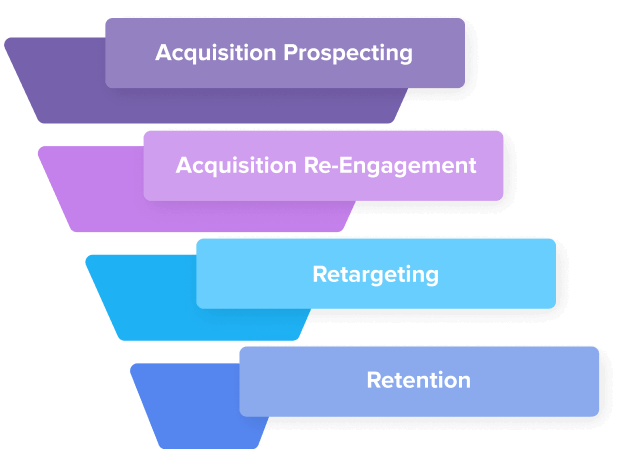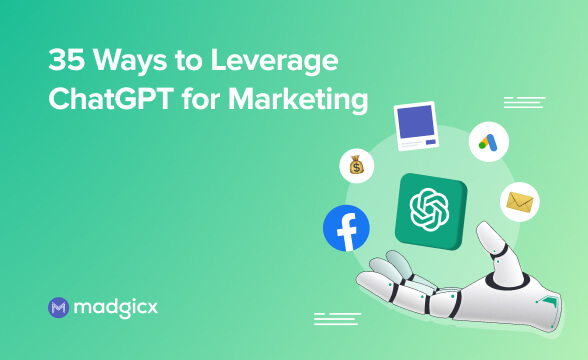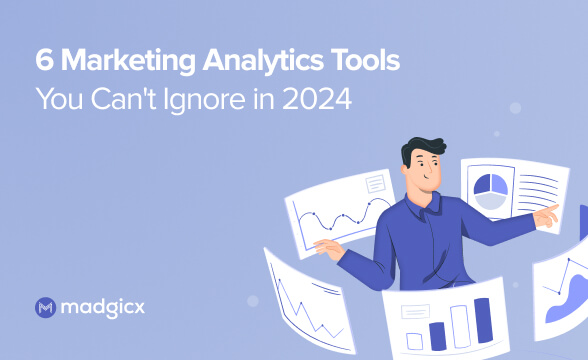Is your ad agency ready for the final quarter of 2022? Find out insanely powerful tips around targeting and ad creatives, along with phase-specific tactics for Q4, 2022.
In the previous article, I shared the Facebook ad strategies you should use as an agency owner in Q4, 2022. Now, it’s time to discuss the tactics for the jackpot season!
Recently, many ad agencies have been impacted by bans, instability, and loss of targeting, tracking, and revenue. All this can be very stressful, but remember, Facebook has still got a lot of GOLD for you in Q4—especially if you serve clients in the e-commerce niche.
During the holidays or Mega Sale Days (MSDs), people expect experiences that are tailored to them as individuals. You see, holiday shoppers want to be entertained and inspired. And once they discover something they love, people anticipate a fast and easy path to purchase.
So, trust me, there is still time to bring in a lot more cash into your business before the year is done. If you run an agency, don’t waste this golden opportunity.
I hope that you’re now motivated to dive into the tactics for Q4 2022. Alright then, let’s begin.
Stepwise targeting tips tailored for ad agencies
Before we jump to the point, let’s address a very crucial issue. As you all know, we’re living in a world without pixels. Given the iOS 14 disruption, I encourage you to use Meta’s in-app ad solution to generate in-app audiences.
The point is to rely less on the Meta Pixel to overcome the effect of iOS 14. Instead, rely more on the data Meta can track and remarket. The less dependent you are on pixel-based remarketing, the less you lose data and stability.
That said, while relying on only what’s reported in Meta should be your priority, it’s not the only thing to do. You could crank it up a notch and leverage enhanced conversions and Conversions API Gateway to get first-party data. Enabling you to have the best possible sources for your lookalikes based on seasonal data. And how to do that? Well, I personally prefer Madgicx Cloud Tracking. More on that later.
Alright, now let’s discuss some practical tips, tactics, and recommendations around audience targeting in your Q4 campaigns. For this one, I’ll divide my advice into 4 steps:

1. Acquisition prospecting
First, use a seasonal source for LAL (lookalike audiences). So, for holiday campaigns in general (e.g., Mother’s day, Valentine’s Day, Christmas, etc.), you should use seasonal data as a source for your LAL. And I’m assuming you have enough data to go granular.
Now, when it comes to Christmas campaigns, you could use the following sources to gather data:
- Last year’s Thanksgiving to Boxing Day (November 25th - December 24th)
- Purchasers during Q4 last year
- Purchases during Black Friday, Cyber Monday (BFCM)
- Purchasers in a short time window (like the last 14 or 30 days)
- Purchasers F2+ (more than two times) in the last 30 days
- Lookalikes of all purchasers
- High lifetime value (LTV)-based lookalikes
- Multi-purchaser lookalikes
- High single-order purchaser lookalikes
Apart from this, you could also experiment with purchasers during the COVID-19 timeframe as a source. When you go for a seasonal source, you can target people who qualify themselves as ‘holiday shoppers.’
The other thing is, it’s going to take a lot of time for you to create the right audiences to target. So, if I were you, I’d just use the Madgicx audience launcher tool. With this tool, you can select from 100+ audiences that cover your entire sales funnel. You can also select your best-performing demographic and even know the best and worst-performing regions. Feel free to give it a try.
2. Acquisition re-engagement
The next step is to re-engage the audiences from the first step. Which audiences in particular? Well, you could target Instagram as well as Facebook engagers. You can also re-engage 2-week ad engagers from the previous pre-BFCM (Black Friday/Cyber Monday) video ads and 50% watchers of that video. Re-engaging audiences that have viewed videos is also not a bad idea.
3. Retargeting
Let’s begin this with every advertiser's biggest disappointment—an abandoned cart. According to Statista, 7 in 10 shopping carts were abandoned worldwide in March 2021 alone. But an abandoned cart isn’t an abandoned opportunity. With the right tools in place and a larger customer base, you can break through the clutter and focus on customers who have already expressed interest.
Here are the audiences I recommend for retargeting:
- BFCM (Black Friday, Cyber Monday) purchasers from the previous year
- Complete purchasers list from the previous year
- Active email subscribers (opened emails in the last 14 days)
- Lead form open no submits (in-app)
- Instant experience interactions (in-app)
- Browsed collections (Last 90 days)
- FB custom audiences
- AOV (average order value)-based retargeting (for orders worth more than $100 in the last 180 Days)
- ATC 3x 180 Days
To make the most of retargeting audiences in Q4, narrow the time intervals for your custom audiences. So, if your objective is sales at scale and not predictability, then tighten your time windows for custom audiences.
And finally, you could push a bit further and try to re-engage inactive email subscribers. Because, well, why not? You should try to bring them back and reactivate them. Leave no stone unturned!
4. Retention
Re-engaging customers keeps your brand on top of their minds and builds retention. Remember, the customer journey doesn’t end at purchase. Re-engaging shoppers can drive repeat purchases and strengthen brand loyalty. As an advertiser, you should strive to reach shoppers who have visited the website/app or shop and guide them back towards a purchase.
I’d focus on three types of audiences here:
Time-frame-based
- Purchasers in the last 30 days
- Purchasers in 1-3 months
- Purchasers in 3-6 months
- Purchasers 6 months+
Based on frequency
- One-time purchasers
- Multiple-times purchasers
And finally, you can use the purchase amount as a basis for targeting. For instance, purchase over X dollars.
5 tactics for designing ad creatives in Q4, 2022
Ad creatives can make or break your campaigns. That’s why I have created a separate section for Q4 tactics from an ad creative perspective.
Let’s face it: previously, you could get away with good-enough-level creatives thanks to Facebook’s algorithm's incredible targeting capabilities. However, it's no longer the case, and targeting has become much less efficient. Hence, your biggest barrier to growth is the lack of on-point creatives and offer angles.
Don't get me wrong, without proper targeting, there’s no one to sell to. This makes it the important part. But nowadays, it’s not the hard part—creative is. So, let’s understand how to make this hard part a bit easier.
1. Be ridiculously creative
Yes, the most important aspect of creating ad creatives is to actually design them in a creative way. Consumers can get tired of seeing the same ad creative over time, and this can result in declining ad effectiveness. That’s why you should diversify your creative mix to speak to the different motivations that influence holiday purchases.
One more thing: People consume content differently on mobile, so utilize creative best practices to ensure your ads capture attention. You could use mixed formats (carousel, reels, stories) and asset types (video and static images) to connect with audiences with different viewing behaviors.
2. Have a dedicated video strategy
Based on Meta’s internal data, video watching comprises 50% of time spent on Facebook, and video production peaks during the holiday season. Combining video creative for longer storytelling on in-stream ads, along with short entertaining bursts on reels, stories, and the feed, helps maximize reach and align with consumer behavior.
If you only depend on non-video creatives, you’re really missing out on so many opportunities. So, hire a video creator if you have to, but don’t neglect this very important aspect of ad creative.
3. Choose the right format
It’s a seamless ad format that helps convert demand into sales. A fast and easy path to purchase can enable businesses to maximize spontaneous purchases.
Ad formats like ads with product tags, Advantage+ catalog ads (formerly dynamic ads), digital circulars, and collaborative ads can turn discoveries into purchases.
I’d like to elaborate on digital circular ads, though. Digital circulars are a new ad format designed to closely replicate the look and experience of print circulars. It leverages the collection ad format, clicking through to an instant experience with (optional) local inventory and pricing. Something worth trying this holiday season.
4. Scale your creatives
If you want to scale through audiences, your creatives must scale too. To do this, you should look to scale through audiences. For example, take your lookalike audience (LAL) from 1% through to 5% at least, and possibly 10% when scaling. If you find a LAL that's working, increasing its size can help you tap into bigger and more profitable audiences.
Scaling creatives means that you adapt your creatives for larger LALs. This is because the 1% LAL will be closer to your ideal customer than 5% or 10%. That’s why the creative needs to change and possibly the funnel too. The 10% is still the top 10% as far as your custom audience is concerned, but they may need more warming up and moving further up your sales funnel.
5. Having enough creatives as backup
Your refresh rate should ALWAYS be higher than 1:1. Meaning that you should have more backup ads than you have running ads to ensure they're available when you need them.
I often run a ratio of 1:5 as a minimum—that is, five backup ads for every ad in operation. Ads that are not being used for scaling drop into a HODL campaign (PPE holding campaign for social proof), and I share the post ID when needed for scaling. It's like having little baby ads in the oven cooking away while the mature ads bring home the money. Sounds cute, doesn’t it?
Phase-specific creative tactics for Q4
And that brings us to the last part of this article. Now, I’ll teach you the tactics you should use during each phase of the fourth quarter. Remember, the market is different during every phase, and so is consumer behavior. It’s crucial to take the right action during any given phase to ensure the best results. So, let’s begin the phase-wise attack plan.
Phase 1: Establish foundations
Period: June-August
Even though this period is not in Q4, what you do during this period will determine how much revenue you can generate when Santa comes home. This is the time to diversify and test various ad types to uncover new audiences.
You can also spice up your campaigns with various ad angles. This is possible until August since you’ll most likely be in prospecting mode and simply trying to get more people to your website. Your ad angles don’t have to be holiday-focused yet.
Here are some ad angles you could focus on:
- Branding
- Product benefits
- Lead with value
- Low-entry direct response
Phase 2: Build momentum
Period: September to mid-November
This is the time to test a variety of ads. You could introduce your brand with different types of video ads—reels, in-streams, stories, and feeds. Building connections through lead ads and ‘click to message’ is also a good idea.
When it comes to ad angles, you should focus on the actual sales, so you should probably only use product-focused angles. Products should be at the front and center of your ads, and yes, don’t forget to remind people of their beautiful and giftable nature.
Here are some ad angles you could focus on:
- Customer benefits
- Product benefits
- Customer needs/wants
- Testimonials
- Unboxing
In-store offers can also be a good angle. Get people in the shop with one item, and at all costs, make sure they don't leave with just one item. Gift guides can also drive more sales. They can come in handy because they make it easy for customers to actually make a purchase instead of wondering what to buy.
You should also reframe your product as a natural gift. In my experience, clothing, electronics, and gift cards are the top gifting categories. Try to fit your product in one of these.
List building is also a good strategy for this period. You could use the ‘Get on our VIP list’ or ‘Sign up to get 5% off during Xmas sale’ tactic.
Phase 3: Maximize sales
Period: Late November to the last pre-Christmas shipping date (for most brands, this is December 20th)
Following are the ad types you can use for this period:
- Ads with product tags
- Advantage+ catalog ads (formerly dynamic ads)
- Collection ads
- Carousel ads
- Branded content ads
When it comes to ad angles, here are the ones I’d choose:
- FOMO (fear of missing out)
- Proof of authority
- Testimonials
- Break down barriers
- Time-limited offers
- Consistent deals
If it’s possible for your client to do it, you could also offer expedited or guaranteed pre-Christmas delivery. People are genuinely worried about not getting their gifts in time. So this one can give your client a competitive edge.
Another strategy would be to create scarcity through bundles. Set up several products and bundles to sell so that you can rotate these offers to create different promos. This allows you to have real scarcity, and low supply usually equals high demand. So, if you have a large number of items and can create different offers around them, go for it!
Phase 4: Post-holiday
Period: Whole of January (optionally, also February)
Alright, we’ll keep this one short and simple. A friendly reminder, though: The holiday season doesn’t end in December. You can still leverage it until January's end.
There’s only one ad type you need here—re-engage customers to help drive loyalty and sales using fresh UGC from phase 3.
And finally, here are the ad angles you could choose:
- Specials offers
- Loyalty offers
- Referral offers
- Membership offers
- Reminders
- Limited time offers
- Aftercare advice
Conclusion
And that brings us to the end of part 2 of the Q4 ad strategy and tactics for 2022. Now it’s your turn to roll up your sleeves and put it in high gear. Most importantly, remember this: Even though the year is about to end for most people, for us ad agency owners, the year starts now! This is the time to take home big money and bring lots of value to your clients. I hope these strategies and tactics help you achieve your goals in the last quarter of this year. All the best.
From accurate tracking to unlimited ad production, Madgicx has all the solutions to speed up your workflow and ensure you're getting maximum results for your clients throughout the holiday season..
Following his passion for outdoor adventures, Madis founded BirkAds - the only agency in Europe that specializes in Optimizing Ads ROI for the Outdoor Industry. He has audited over 3,000 campaigns, conducted over 672 hours of coaching sessions, and managed ads for more than 70 companies worldwide.



.png)





